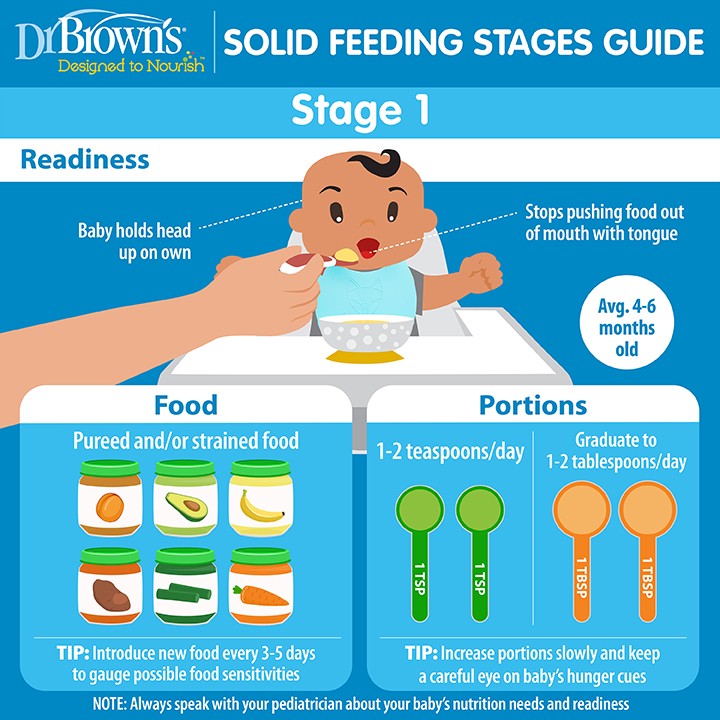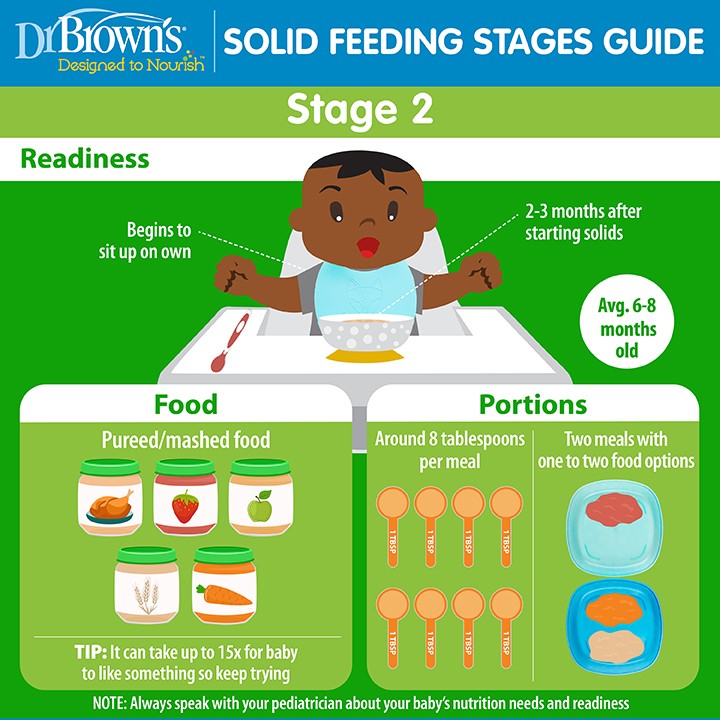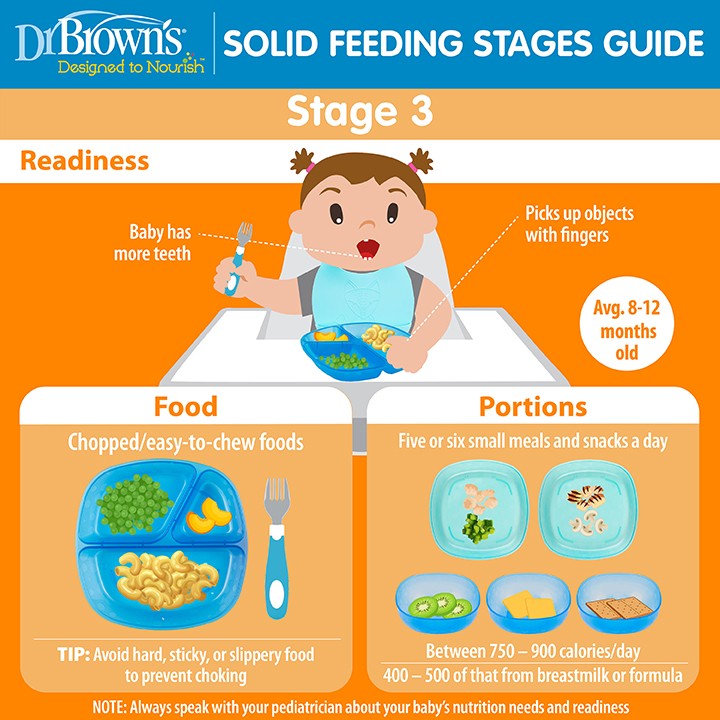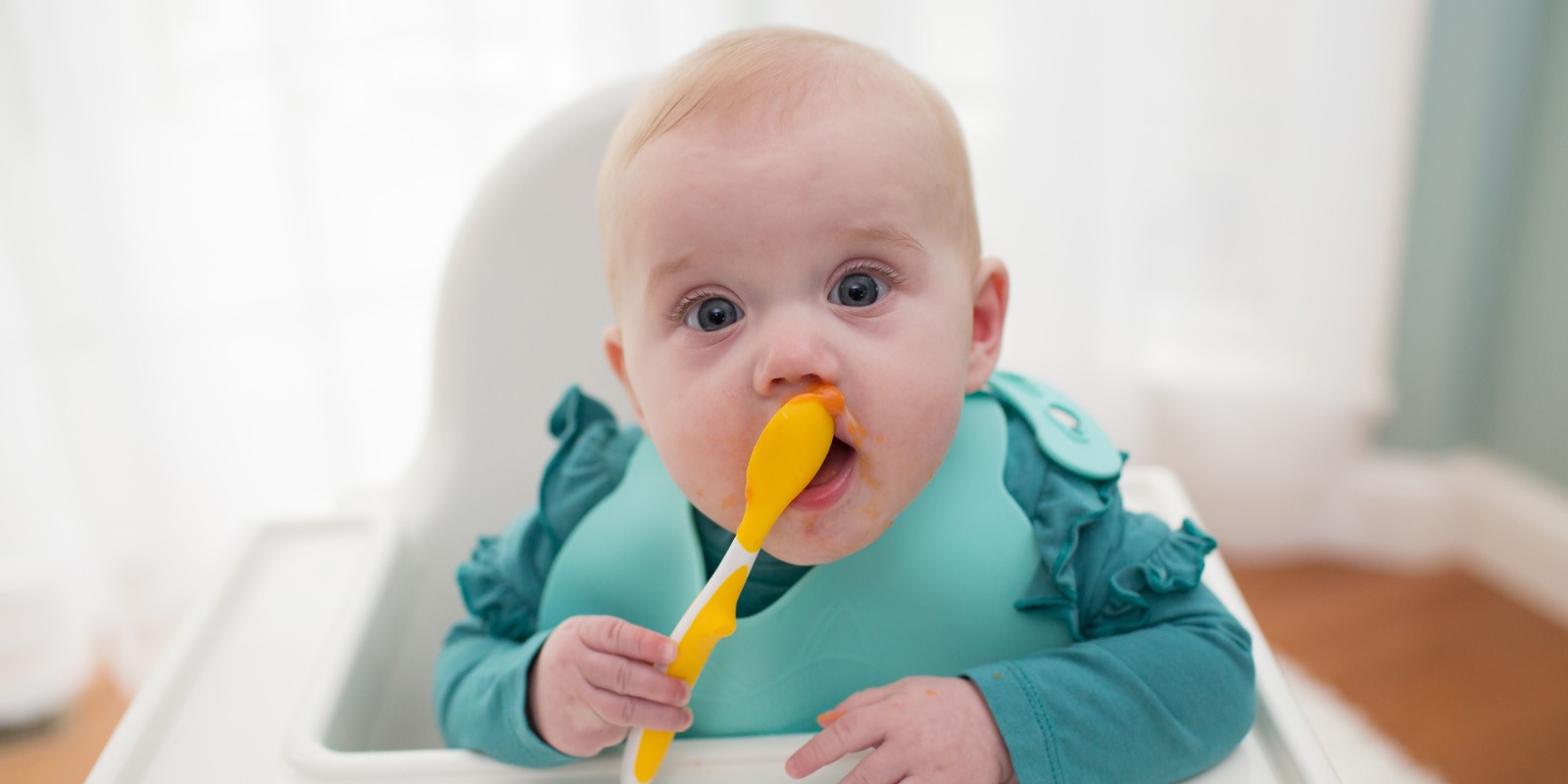In a blink, your newborn goes from a tiny bundle to a growing babe grabbing at everything you try to eat. This interest in your food is actually a great indicator that baby is ready to begin the solid food journey!
For parents of solid food beginners, it can feel a bit overwhelming trying to figure out what food is safe and what isn’t, what portions baby should eat, and how often they should be eating. To help, we’ve broken it down into three solid feeding stages from beginner to a year old, based on certain physical and age-related milestones. In general, until baby is at least one year of age, they should not be fed the following food: Honey, cow’s milk, eggs, citrus fruits/drinks, and shellfish.
It’s important to remember that this is a general guideline and you should always speak with your pediatrician about your individual baby’s solid feeding plan, including which foods to omit and for how long.
Happy feeding!

Solid Feeding Stage 1: 4 – 6 Months
To reach the first stages of solid feeding, baby should be able to hold their head up on their own. While this is roughly anywhere from 4-6 months old, baby should be at least 4 months before starting on any solids.
You’ll also notice that their tongue thrust, or the pushing of food out of their mouth with their tongue, has largely stopped. This means their swallowing capabilities have developed and they’re ready to try some first tastes!
During this time, introduce baby to as many new foods as possible, every 3-5 days, so you can tell if they have any food sensitivities early on.
Things You’ll Need: Baby spoons and bowl with lid

Solid Feeding Stage 2: 6 – 8 Months
At roughly 6-8 months old, baby will begin to sit up on their own. This may not fully develop for some time, but you’ll see them make attempts. It can be anywhere from 2-3 months after starting solids, depending on when you started.
During this time, they’ll largely eat easy-to-swallow foods like mashed carrots. Remember, it can take up to 15 times of baby eating something before they like it, so don’t give up on food if at first they seem uninterested. You can now also start to offer more foods at one time.
You can also begin to let them hold the spoon and help you bring it to their mouth.
Things You’ll Need: Silicone feeder and plates

Solid Feeding Stage 3: 8 – 12 Months
By 8-12 months, baby should have more teeth to chew food and a more developed pincer grasp, and is therefore ready for a wider range of solid food. Anything chopped/easy-to-chew, and certain foods like eggs that they couldn’t eat before may start to be introduced. Of course, avoid sticky, slippery, or hard-to-chew food to help prevent any potential choking hazards.
At this point, baby can eat foods in more diverse meals and simple snacks. As they get closer to a year old, they can also use the silverware on their own and begin to feed themselves using their hands and utensils.
Things You’ll Need: Toddler silverware, portion plates, food catching bib
